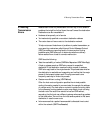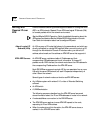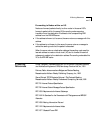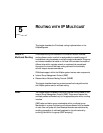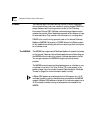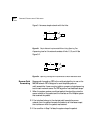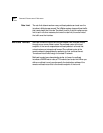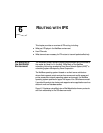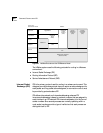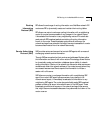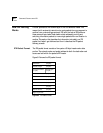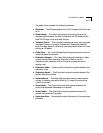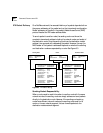
Multicast Interfaces 5-5
Pruning Pruning is a method used in the RPF algorithm to forward packets to a
spanning tree only if group members exist in the tree. This method results
in fewer spanning trees, but it requires dynamic updates to the routing
table.
Nodes that are at the border of the network and have no point beyond
them in the RPF spanning tree are called leaf nodes. Leaf nodes all receive
the first multicast packet. If a group member is attached to the leaf node,
the node continues to accept packets. If no group member is attached to
the leaf node, the node sends back a “prune message” to the router that
sent the packet. The message tells the router to send no further packets to
this group. In the LANplex system, the Administration Console IP multicast
CacheDisplay includes information about when pruning will occur on the
spanning tree.
Multicast
Interfaces
Multicast interfaces on the LANplex system have several characteristics
which are described in this section:
DVMRP Metric Value The DVMRP metric value determines the cost of a multicast interface. The
higher the cost, the slower the link. The default value is 1.
Time-To-Live (TTL)
Threshold
This TTL threshold determines whether the interface will forward multicast
packets to other switches and routers in the subnet. If the interface TTL is
greater than the packet TTL, then the interface does not forward the packet.
The default value is one 1, which means that the interface forwards most
packets.



